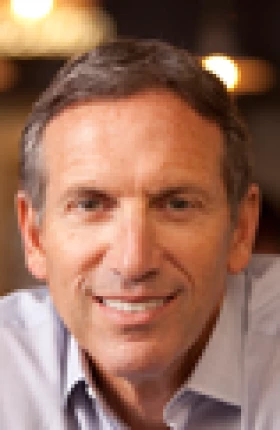Juggling on a Tightrope
Currently, most global companies are operating in a two-speed world, yet this scenario was not on the drawing board when today’s leaders were rising through the ranks. The length of the economic malaise in mature markets and the sustained growth of emerging markets have jumbled the deck for them. Emerging markets are no longer satellites circling far away from the center. Leaders now must figure out how to fold their emerging-market businesses into the core of their companies and generate predictable returns from their still sizable mature-market businesses.
Ultimately, today’s chief executives will be judged on how well they manage this balancing act of leading in a two-speed world. Half of the global GDP growth in this decade is expected to come from Asia. Brazil will deliver greater growth than Germany, France, or the U.K. And it is not just the speed of emerging markets that is different. Culture, talent, business models, and the role of the state all play out differently in these economies. The emerging markets are also producing global challengers, companies that rival traditional multinationals for industry leadership.
To understand how companies are navigating these two worlds—and the new competitive order—we have spoken with seven chief executives, who shared their perspectives in interviews
Siegfried Russwurm of Siemens Industrial Sector
Howard Schultz of Starbucks
Jean-Pascal Tricoire of Schneider Electric
The gaze and orientation of these chief executives are shifting increasingly overseas, especially toward emerging markets. Across all the interviews, the leaders highlighted the same four critical capabilities, specifically the need to excel at:
Leading from the global field
Feeding two beasts
Managing the new rules of culture and engagement
Creating a global talent pool
Leading from the Global Field
CEMEX, Daimler, Maersk, Schneider Electric, and Siemens each do business in more than 100 countries and have manufacturing operations in dozens of them. Starbucks has stores in 60 countries. Samsung Engineering is managing projects in more than 20 nations. So even if these companies’ chief executives were able to manage businesses from headquarters, they could not lead their people in the outer reaches of their empires from afar.
Leadership is a contact sport. People want to know their leaders. “We are a company that benefits from physical meetings and being in close touch with our people,” Schultz said.
The flip side, of course, is that leaders need to know their people and the businesses that they run. “When you meet the frontline, you get the truth,” Andersen said. “If you just stay at your desk, you lose relevance.”
Leaders of large businesses have always been on the road; this is not a new development. But now the stakes are higher. With so many key overseas markets demanding attention, it is more difficult to check the pulse of the people, to gauge the effectiveness of local leaders, and to know when to intervene.
Based in Hong Kong, Tricoire is on the road about 80 percent of the time. As he puts it, “Reality does not happen in corporate. Reality happens in the field, with customers and with employees.” Zetsche also is a frequent flier. “Even five years ago, most of my entry stamps in my passport would have been from the Western Hemisphere. Today, most of them are from Asia,” he said.
Tricoire frequently travels alone. “When I arrive at Schneider in another country, I am with the people of the country. There is no barrier or no interpreter in between the teams and myself. After a few days together without any protection, I hope that people dare to tell me the good, the bad, and the ugly,” Tricoire said. “My job is to deal with the bad and the ugly, and to support them to do the good.”
Russwurm uses customer visits as an opportunity to become familiar with local staff. “I see how they interact with the customer, how well they understand the customer’s needs, and how well they argue the Siemens value proposition to specific customers,” he said. “That is a wonderful source of insight.”
The Siemens managing board frequently meets in emerging markets, but it does not simply sit in a conference room. Following a presentation by the local leadership team, the ten board members fan out into the field and visit with customers and government officials.
“After two days, we reconvene and try to consolidate typically 200 touch-points to see if they mesh with the descriptions that our local team has given us and to reach conclusions. What are the investments that Siemens should make in these regions?” said Russwurm.
This approach neither replaces nor undercuts the delegation that executives are taught is necessary to run large, complex, multimarket enterprises. But it does remind us that while management requires delegating, leadership demands getting dirty.
Feeding Two Beasts
For all the promise and potential of emerging markets, the center of gravity for Western based-companies is still located in mature markets. The developed world generates most of the revenues, employs most of the people, and houses most of the assets. Also, a company’s culture is generally formed in its home country. Against the backdrop of these realities, nurturing small but fast-growth markets can be tricky; they risk being smothered by the institutional inertia and a history of operating in mature economies.
Alternatively, senior executives might become overly-enamored of emerging markets and lose sight of the challenges of operating in mature markets. “You have to be very aware that the slow-growth markets need a lot of attention precisely because they have to do many things well in order to survive in a highly competitive environment,” Zambrano said.
One of the hardest things to do is directing resources where they are needed most—and that may be away from the mature markets. “In slow-growing or no-growth areas of the world, you have to be very firm. As much as they would like to keep the funds they generate, they do not need the money,” Zambrano said. “So it has to go to where you actually get a better financial return.”
Emerging markets frequently require specific products and services tailored to their income levels, infrastructure, traditions, and habits. Maersk, for example, would not be able to enter the shallow ports in many emerging markets if it hadn’t added special ships. And yet, if every market is free to do its own thing, the advantages of scale, brand, and consistency fall away.
One way in which Starbucks has managed that tradeoff is by reorganizing around three regions—the Americas; Asia Pacific; and Europe, the Middle East, and Africa—rather than functions. The Americas region is disproportionately larger than the other two, but what the new structure lacks in symmetry it gains in agility by pushing decision-making closer to the customer. The regional presidents effectively operate as the “CEOs of their own businesses,” Schultz said.
“If the stewards of any consumer brand believe that they can create local relevance sitting in a white tower somewhere in the U.S.—and dictating the ways in which consumers will react all over the world—they are on a collision course with time,” said Schultz. “The challenge that we have to understand and overcome is creating the balance between the Starbucks experience that customers all over the world expect and desire and a healthy dose of local relevancy that demonstrates respect to the local customer.”
Siemens and Maersk are both organized around vertical business units, rather than regions. To ensure that attention is paid to emerging markets, Siemens has implemented mechanisms and formal structures that foster its vertical businesses.
Maersk divided responsibility for 15 fast-growing, high-priority markets among its six-member executive team. “We are responsible for determining whether there are new activities or synergies that we can take advantage of in terms of cross-selling in these countries,” Andersen said.
Forty percent of Schneider Electric’s revenues are generated in what Tricoire calls “new economies,” so the company is accustomed to meeting the specific needs of these markets. “Our culture is a culture of local empowerment and decentralization,” Tricoire says. “One of the assets that we have benefited from in new economies has been our capability to trust our local employees and local teams and give them the capability to adapt our approaches and business model.”
Managing the New Rules of Culture and Engagement
Culture is the glue that unifies disparate businesses into an organization greater than the sum of its parts. But global organizations will not capture the true value of emerging markets if the glue does not allow for local wiggle room.
The energy and vitality of emerging markets are part of what makes them special. “An important thing we can learn from developing markets is their enthusiasm. The willingness to go after growth and seize opportunities is refreshing,” said Andersen.
At the same time, however, letting a thousand flowers bloom could lead to mild forms of corporate anarchy. There needs to be a common culture, built around broad principles and values, that both celebrates local nuance and corrals it. “We are responsible, excellent, and innovative. That is true wherever Siemens operates,” Russwurm said.
Samsung Engineering global focuses on its corporate values but also remains sensitive to local custom and convention. But, as Park explained, “We also aim to be a local company within each market we serve, respecting cultural or religious differences and diversity. We adjust our working styles, for example, to accommodate daily prayers. We call this balance between integration and localization glocalization.”
At Schneider Electric, new employees frequently tell Tricoire that his company has a strong culture. “But that does not mean that the people of Schneider China operate the same way as the people of Schneider U.S. do. They operate with different soft skills, but they share the same values,” Tricoire said. “Our values are what keep us together. Straightforward dialogue is one of the important values that we carry together.”
In China, Starbucks recently held two meetings, one in Beijing and one in Shanghai, for the parents of employees. The meeting served as a way to express the company’s understanding of the importance of family in China. “It was as locally relevant as anything we have ever done,” Schultz said. “And yet it was part of the culture and fabric of our 40-year history.” While Schultz recognized that this “annual meeting of parents” may not work globally, he said he believes that it shows the new ways that today’s leaders and their teams engage with employees.
Social media has also changed the nature of the relationship between companies and the market and their employees. The instant communication of fact and fiction raises the stakes for leaders. “You have to be authentic,” Zetsche said. “Once you accept that, it becomes a tremendous opportunity.”
Creating a Global Talent Pool
The seven leaders spotlighted here all run businesses that boast strong employer brands. But even as employers of choice, both in their home markets and abroad, these companies face stiff competition and challenges in developing a global pool of talent—employees who can move seamlessly across emerging and developing markets.
“The typical board of a German company is male, white, 60, and German,” Zetsche said. “When you want to ‘conquer the world,’ it is certainly not a recipe for success for the future.” Over time, Zetsche explained, Daimler will promote non-German executives so that the board is “ultimately representing the markets that we are doing business in.”
Starbucks, for example, has tended to rely on expatriates to run businesses in emerging markets, in order to ensure that the Starbucks culture is properly incubated. Starbucks, in the words of Schultz, has always sought to be “a different type of company that would balance profitability and benevolence.” It is therefore difficult, he explained, to build “an organization with people who are not imprinted with the history of Starbucks.” Relying on expatriates is an expensive approach, so Starbucks is working to develop local leaders who can rise through the ranks.
Maersk has a rich and long history of global talent mobility. More than 70 nationalities are represented in its headquarters, and mid-level executives frequently rotate between mature and emerging markets. Yet mobility slows as executives move up the ranks. It is far easier to move from an emerging to mature market as a sales manager than as a country manager. “We are increasing our recruiting activities for top talent in the developing world and trying to diversify the skills and cultural background in the group. But it is a work in progress,” Andersen said.
Schneider Electric has actively sought to encourage that type of movement through programs such as Marco Polo, which allows recent graduates to work outside their country of origin for their first two years of employment. “If you are like me, a gypsy—and ready to go to one place and to the other one, to bring your know-how, and to mingle with other communities—this is a very exciting place to be,” Tricoire said. “We believe that mobility and diversity are big sources of innovation and creativity.”
Mobility is a good thing so long as all the moving occurs within and not beyond the organization. As Zambrano said, “Even in areas of the world where unemployment is high, unemployment for very talented individuals does not exist.”
Samsung Engineering engages in talent exchange among markets as a way to reduce the gap in talent between mature and emerging markets and overcome cultural differences. “Our engineers in Korea are conducting projects with engineers from the U.S. and India. We are planning to continuously expand labor exchanges between our main engineering hubs in these three locations,” Park said.
Because these companies are desirable employers and have reputations for offering strong training programs, their employees are recruited frequently and aggressively, especially in emerging markets. “To keep the best and the brightest is an interesting challenge that we increasingly have around the globe,” Russwurm said. “We make quite the effort to ensure that those people stay with us.”





